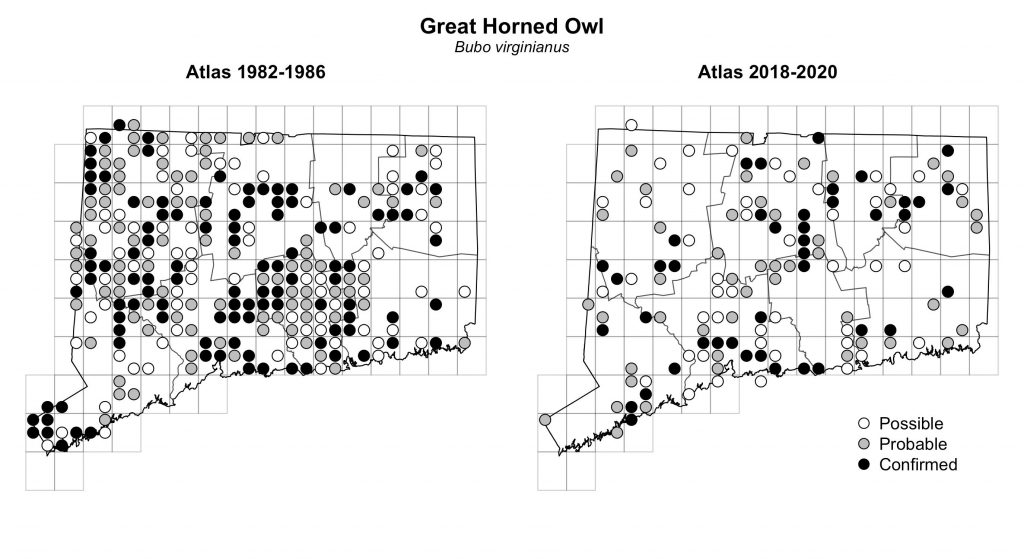The final breeding season for the atlas is underway and although there are only a few species breeding already, great horned owls have been on nests for some time. The maps below, however, show that there are many places where the species was found in the 1980s that have no records from the current atlas:

Buzz Devine, atlas regional coordinator for the northwest region, has put together the following tips on how to look for the species:
This is the best time of year for atlas volunteers to be surveying for Great Horned Owl nests. Great Horned Owls are the earliest nesting raptor in the state and often start setting up nests in December or January depending on weather conditions and other factors. With the absence of leaves it is much easier to search woodlands to spot old nests in trees which potentially could harbor nesting owls. This species favors nest sites in woodlands or woodlots adjacent to open areas such as fields, marshes, or croplands.
To get started you should canvass for great horned nesting sites by searching your blocks (or any other block for that matter) from roadside or trails while conducting winter surveys or any other time while traveling through an area. Look for trees with larger nests in crotches or alongside the trunk. These nests may be made of sticks (former hawk nest) or leaves/sticks (crows, squirrels, etc). Make note of where these nests are and occasionally check them throughout the winter and early spring months. Oftentimes it is difficult to see an adult on the nest, especially if the nest is high in the tree. If the female owl is incubating or brooding owlets she could be hunkered way down in the nest and may be difficult to see. Check a potential nest from several different angles to see if ear tufts or the top of the head is protruding above the sticks. Look around the tree for owl signs—whitewash, pellets, and/or dead animal fragments (feathers, fur, bones). Usually early in the nesting season there will be scant sign under the nest tree but check under adjacent trees, especially conifers. Later in the nesting cycle owl sign should be evident under the nest tree.
If you suspect a nest has potential and/or know Great Horned Owls are in the area, another helpful hint for finding an active nest is to listen for their deep hooting calls around dusk. Frequently, the male and female will communicate with each other at this time or just after dark. Incubating or brooding females regularly call from or near the nest site; her hoot is higher pitched than the male’s. Listen and try to pinpoint the general location of the birds and during daylight hours search the area for any possible nests. As the breeding season progresses the owlets’ begging calls can be heard just after dark and into the night. Their begging calls are audible from quite a distance if the night is still.